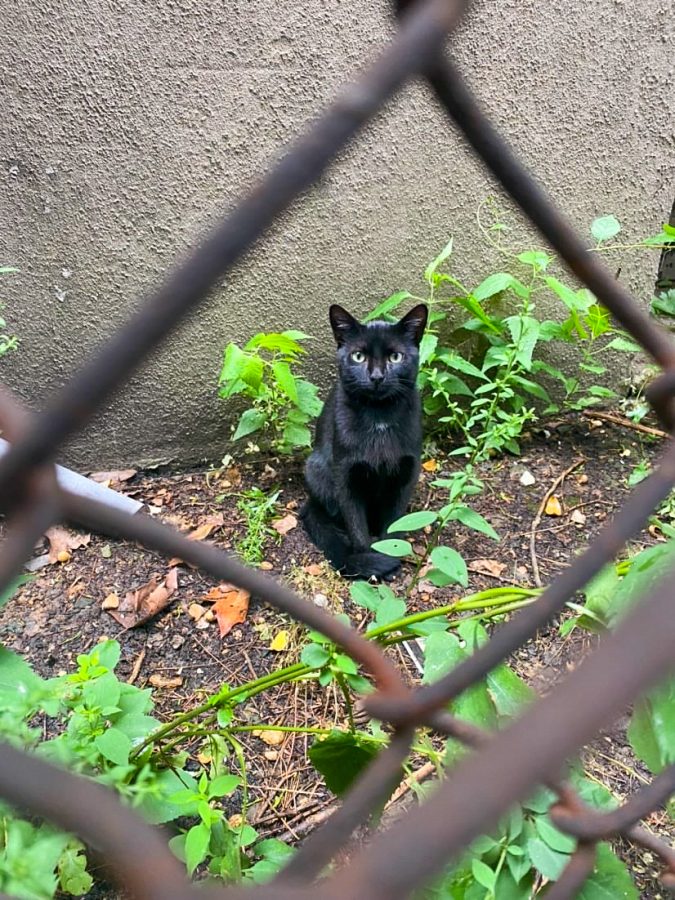Public Safety Issues Warning about the Cats on Rose Hill Campus
Fordham University’s Rose Hill campus has become recently renowned for its ever-present cat colony. Hundreds of students have approached, pet, taken photos of and fed the cats. These cats have become the subjects of half a dozen Instagram accounts run by Fordham students, and many students post the photos of the cats to their own feed.
However, recently, the University has received reports of several incidents on campus with the animals, causing concern within the university’s administration, according to Robert Fitzer, director of Fordham Public Safety.
On Oct. 15, the Department of Public Safety issued a warning via email to Rose Hill students, stating that they must not “feed, handle, touch, grab or make sudden movements toward the animals.”
This statement came shortly after the University Health Center experienced an influx of injury reports from animals, on- and off-campus. Though it was released with the goal of ceasing those types of reports, it has not been as effective as presumed.
“We have had five recent incidents reported to the University Health Center, including two that occurred after we sent out our Public Safety Advisory on October 15, 2021,” said Fitzer.
Fitzer also states that this is not the first time the cat colony has posed a threat to the student body. “We had similar reports of cat bites in the fall of 2017. Two students reported being scratched or bitten,” he said.
Fitzer said he attributes the rise in cases to the “large number of first-time students that are not familiar with our cat colonies.” Students who are not used to being around cats or do not have experience handling them may risk their health and safety if they approach the animals, he explained.
The cats have been looked after by the university for about seven years now, said Garrett Barker, the director of campus operations. They are cared for by a retired Fordham employee who ensures that “all the cats are healthy and have been through the TNR [non-lethal trap, neuter, release] process,” said Barker.
Fordham’s TNR program was enacted because “there was an influx of new cats on campus and there were a lot of kittens all over campus,” said Barker. The university employed the program to avoid the cat colony growing in size and to prevent more feral cats from entering Fordham’s gates because of their territorial nature, he explained.
Both Fitzer and Barker affirmed that students should avoid the cats. Although they are vaccinated and neutered, they still may carry fleas.
As evidenced by the reports of animal bites and scratches on campus, their feral tendencies may lend them to aggression, explained Barker. “The cats stay on campus because they have established Fordham as their home,” said Barker. “[However], students should stay away.”
Morgan Spilman, FCRH ’23, is one of the owners and creator of @fordhamwhiskers, one of the many accounts dedicated to sharing photos of the Fordham cats. Spilman says she created the account after meeting a handful of students while they were petting a cat outside of Faculty Memorial Hall. Though she said she has had many positive experiences with the cats, she also knows a Fordham student who “had to get multiple rabies shots” after being “bit[ten] several times” by a cat on campus.
Spilman herself was prescribed antibiotics by the University Health Center to combat a potential bacterial infection after experiencing a bite of her own. She said that she later found out the cat that bit her wasn’t feral and that it lives in the basement of a building near FMH.
There are many students like Spilman who heed the warning of Public Safety but continue to interact with the animals. Despite the few confirmed cases of incidents, the probability of being bitten by the cats remains statistically low, which is why so many remain avid fans, explained Jacqueline Risch, FCRH ’24.
“They’re like a good luck charm,” she said. “You see one during your day, and you know it’ll be a good day.”

Samantha “Sam” Minear is a senior from Long Branch, N. J., majoring in international studies and communications. She started as a contributing writer...








































































































































































































Keegan • Oct 28, 2021 at 11:01 am
10/10